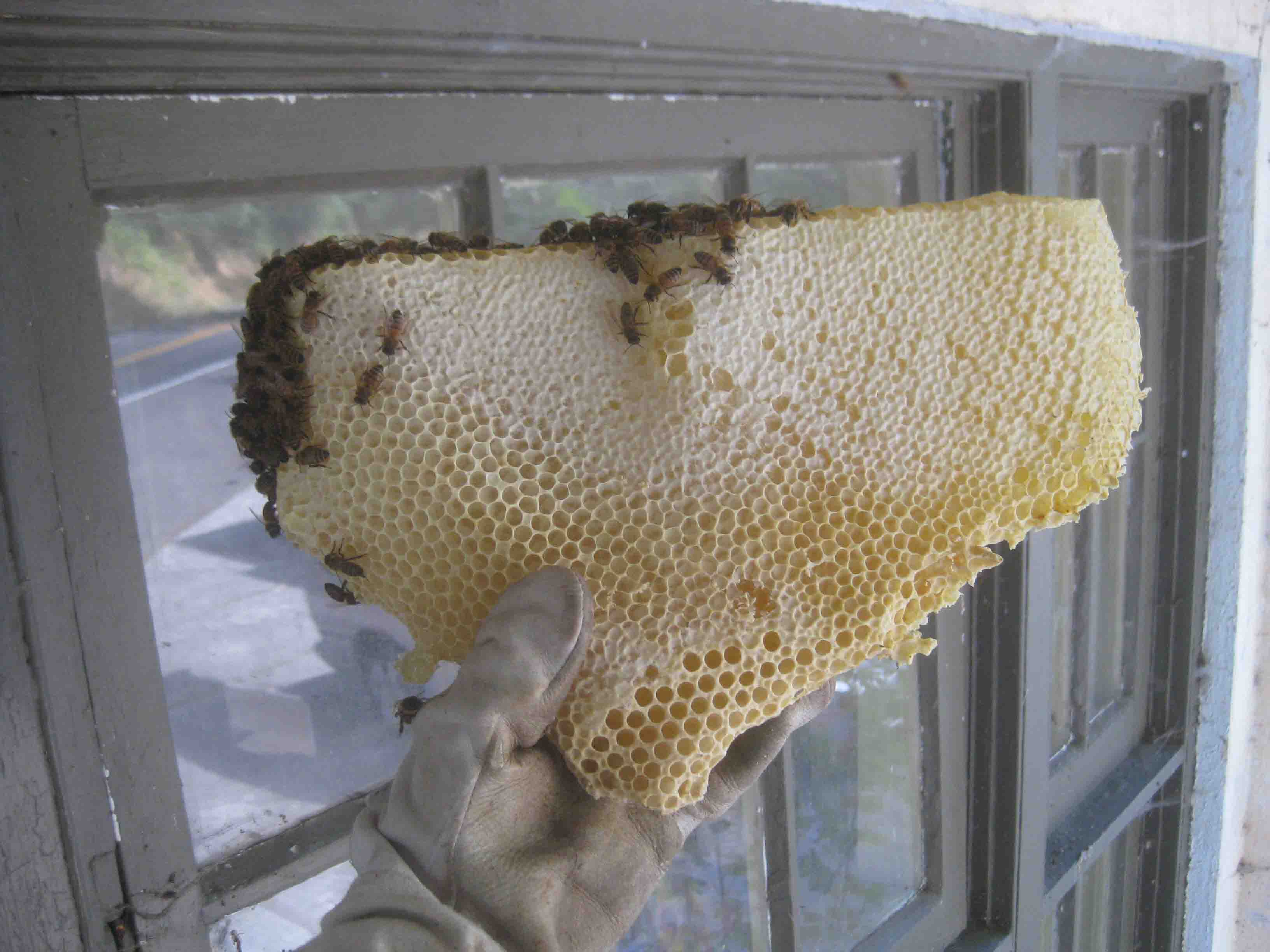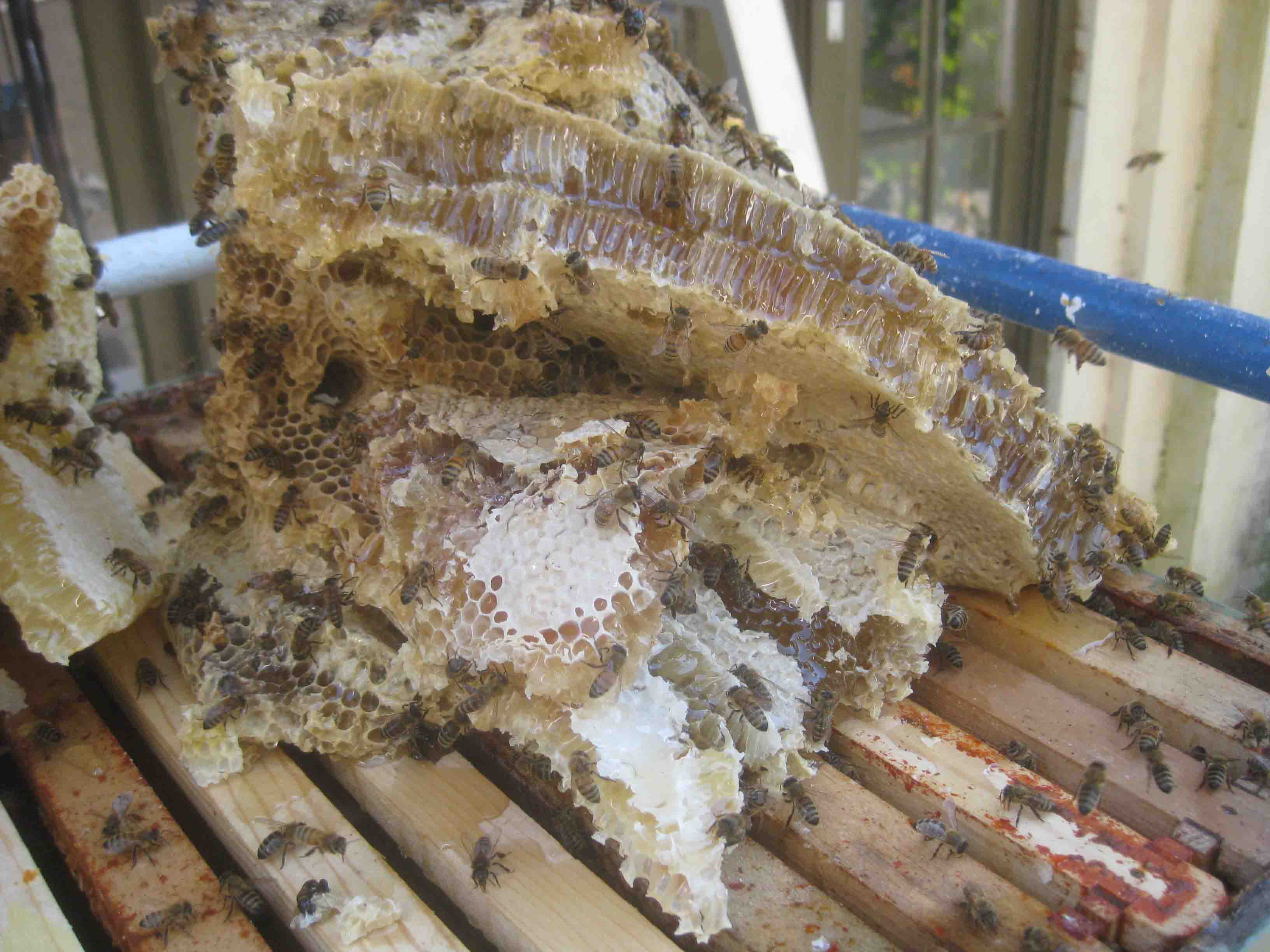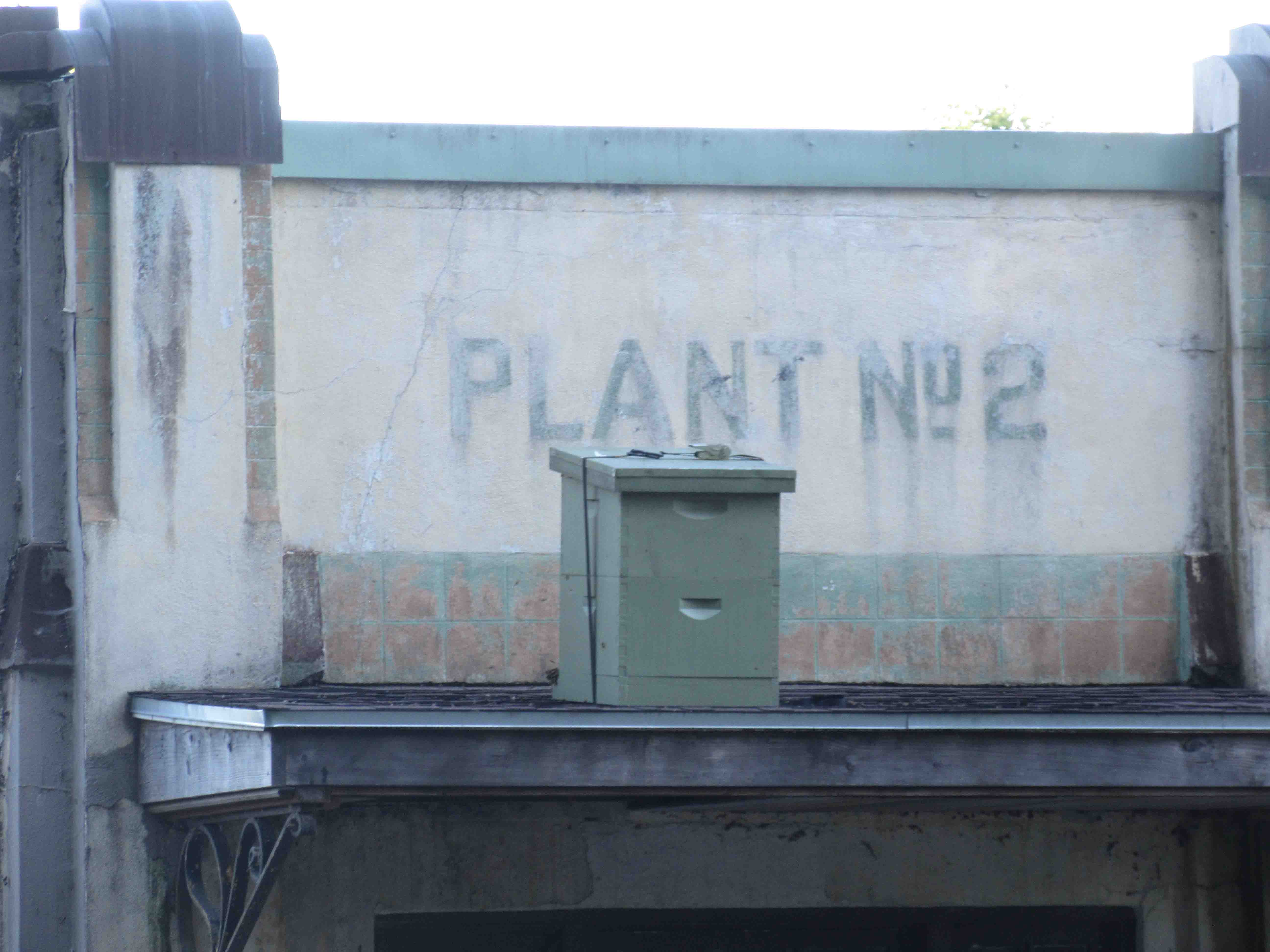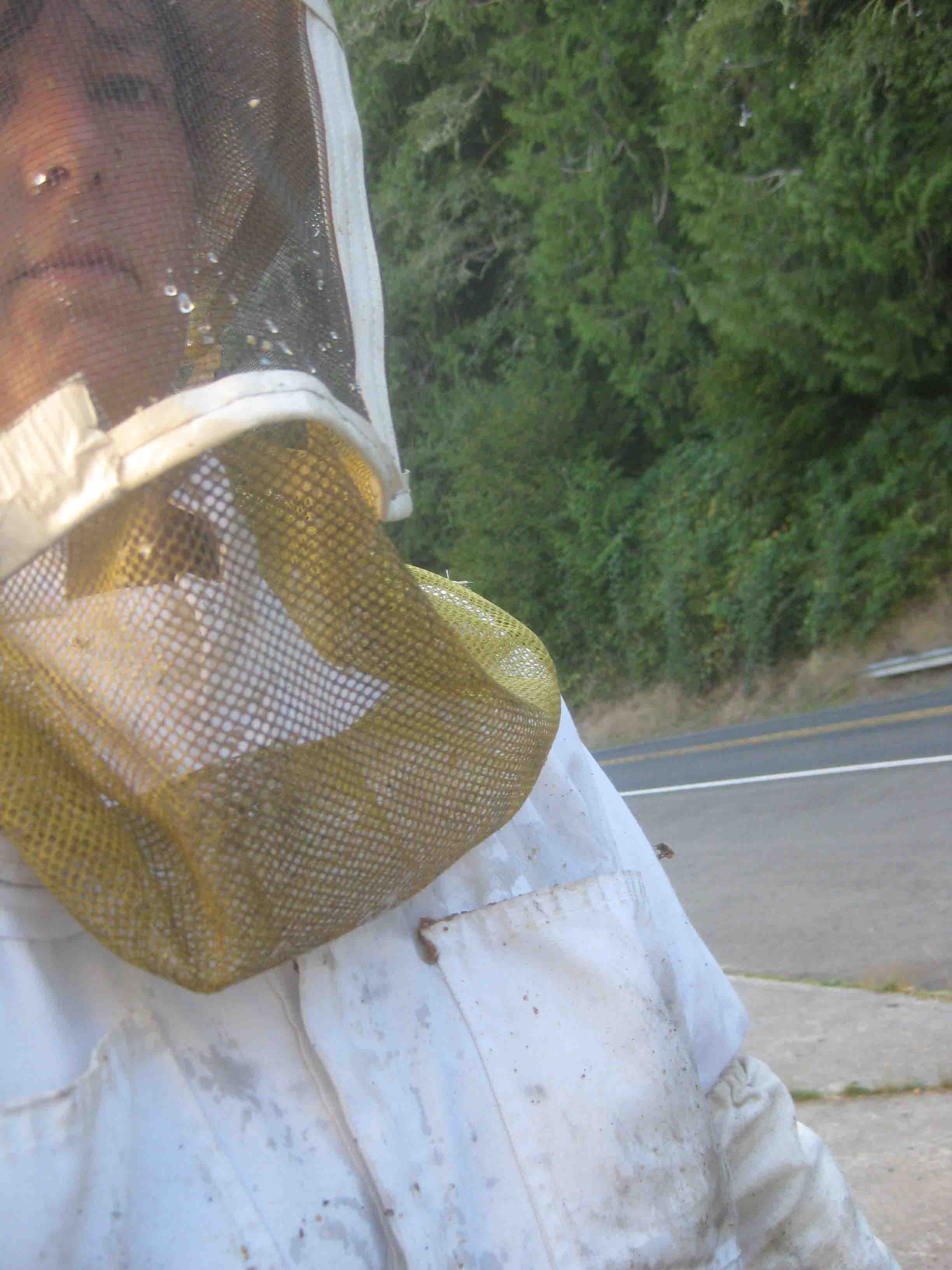When you’re a beekeeper, your friends will ask you to remove bees from all sorts of difficult-to-reach places.

 You start early in hopes of getting the honeybee colony removed from the awning before the heat of the day settles in around you like a wet fur coat. But there’s no ladder at the site, and you have to drive 40 minutes round-trip to get yours, so there went the cool morning hours.
You start early in hopes of getting the honeybee colony removed from the awning before the heat of the day settles in around you like a wet fur coat. But there’s no ladder at the site, and you have to drive 40 minutes round-trip to get yours, so there went the cool morning hours.
Now you’re up on the ladder, which won’t rest flush against the side of the building, so you’re standing with your thigh pressed against the edge of the ladder, torso angled over the side, hoping you don’t shift your weight the wrong way and fall in a heaping mess of beekeeper and honeycomb onto the slate pavers below.
 The first sections of comb come out easy. They’re beautiful light yellow and built in parallel sheets that pry easily from the ceiling. Each feels like a chunk of gold as you gingerly slither down the ladder to deposit the treasure into a bucket. “That was so easy,” you think, gazing at the remaining three-quarters of the hive, imagining you’ll be done within the hour.
The first sections of comb come out easy. They’re beautiful light yellow and built in parallel sheets that pry easily from the ceiling. Each feels like a chunk of gold as you gingerly slither down the ladder to deposit the treasure into a bucket. “That was so easy,” you think, gazing at the remaining three-quarters of the hive, imagining you’ll be done within the hour.
The next section of comb is gnarled and interwoven. It is well-attached to the ceiling and joists. It doesn’t come out easily. You have to break the comb off in pieces and now honey is leaking out everywhere – all over your gloves, onto your hood, and down the ladder, forming puddles on the ground below. The honey is so thick on your gloves that you have to wipe it off onto your coveralls just so you can grip your hive tool. Spectators pace, just out of reach of the bees, anxious for a chance to sink their teeth into a chunk of raw honeycomb. Sweat drips off your brow, sweat trickles down your back, your armpits feel juicy. There’s nothing you can do about any of it, you’re covered head to toe in protective gear. You resign yourself to being a hot, sticky, sweaty mess.
Hours later you pull the last bit of comb from the cavity and you scrape as much of the leftover wax off the ceiling as possible but your hive tool keeps catching on the damn roofing nails. You give up and spend the next couple of hours pulling bees out of the pounds of honeycomb you’ve piled on top of their new home, a wooden box containing ten frames of wax and comb ready for a queen bee and her workers to start raising the next generation of bees. By the time you wrap up, you’ve been on the ladder for six hours.
from the cavity and you scrape as much of the leftover wax off the ceiling as possible but your hive tool keeps catching on the damn roofing nails. You give up and spend the next couple of hours pulling bees out of the pounds of honeycomb you’ve piled on top of their new home, a wooden box containing ten frames of wax and comb ready for a queen bee and her workers to start raising the next generation of bees. By the time you wrap up, you’ve been on the ladder for six hours.
 You place the new beehive on the awning in hopes that the rest of the bees will move in. They never do. You’ll come back the next morning to gather up the stubborn gals who’ve clustered at the site of their old hive. You’ll scoop them up and dump them into the box. You’ll come back and do this again in the evening. You’ll do it one more time early the next morning and then pack up the box and bees and take them all home.
You place the new beehive on the awning in hopes that the rest of the bees will move in. They never do. You’ll come back the next morning to gather up the stubborn gals who’ve clustered at the site of their old hive. You’ll scoop them up and dump them into the box. You’ll come back and do this again in the evening. You’ll do it one more time early the next morning and then pack up the box and bees and take them all home.
 Now you’re exhausted, over-heated, dehydrated and hungry. You decide to never do a cut out again. It’s no fun removing an established colony out of a space that they’ve chosen to occupy, inadvertently killing hundreds of bees and making one hell of a sticky mess in the process. Sometimes it needs to be done. Sometimes the homeowner just doesn’t want bees around. Sometimes the bees have chosen a nest site poorly, such as in a chimney. But you agree with yourself to never do a cut-out again.
Now you’re exhausted, over-heated, dehydrated and hungry. You decide to never do a cut out again. It’s no fun removing an established colony out of a space that they’ve chosen to occupy, inadvertently killing hundreds of bees and making one hell of a sticky mess in the process. Sometimes it needs to be done. Sometimes the homeowner just doesn’t want bees around. Sometimes the bees have chosen a nest site poorly, such as in a chimney. But you agree with yourself to never do a cut-out again.
The next day you get a call asking you to remove a colony from a wall.